Those engaged in the academic study of religions, and specifically the origins and development of early Christianity, draw a sharp distinction between what they call the historical Jesus and the “Christ” of Christian faith and devotion. How and when this transformation took place–from Jesus the itinerant messianic Jewish teacher and healer, to the preexistent, eternal, divine, Son of God–is called “Christology.” What receives much less attention is a similar, perhaps even greater, transformation–that of Mariam, the Jewish mother of Jesus to the Blessed Virgin Mary, the Mother of God, and the Queen of Heaven.
” Mary’s maternity,” Pope Benedict has explained, “is at one and the same time a human and a divine event. . . . The Son of God was begotten by Him, and at the same time is the son of a woman, Mary. He comes from her. He is from God and from Mary. For this reason the Mother of Jesus can and must be called Mother of God.”
Pope Benedict called upon the “Theotokos,” the Mother of God, to intercede for the world entire, entrusting to her care “situations in which only the grace of the Lord can bring peace, comfort and justice” (First Vespers for the Solemnity of Mary Mother of God, Vatican City, Dec. 31, 2006, Vatican Information Service).
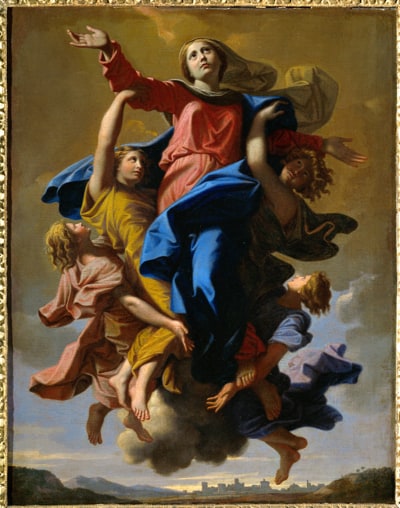
The Pope’s words well represent the stark contrast between a historical view of Mary–or let’s call her more accurately by her Jewish name–Mariam, the very Jewish mother of Jesus–and “Mariology,” that is the theological dogma about, and the devotion to, “the Blessed Virgin Mary” as the “Mother of God” that has developed over the centuries in Christian tradition. This includes her “immaculate conception (at her conception she was miraculously free of “original sin”),” her “perpetual virginity (she never had sexual intercourse throughout her entire life),” and her corporal or bodily “assumption” into heaven. There she reigns next to her Son Jesus Christ at the right hand of God as co-intercessor with him on behalf of humankind, and for some, even “co-Redemtrix.”
But what about the historical Mary. Unfortunately we know very little. In the time of Jesus approximately 20% of Jewish women were named “Mariam” in the Land of Israel, making it, along with the name Salome, one of the two most popular female names. The name was variously written and pronounced, both in Greek and Hebrew, as Mariam, Miriam, Maria, Mariame, Marya, and rarely, Mariamene, honoring Miriam “the prophetess,” the sister of Moses and Aaron (Exodus 20:15). It remains a popular name to this day among Jewish women.
What our various sources tell us is that Mariam was the mother of seven children–Jesus and his four brothers–James, Yose, Simon, and Judah and at least two sisters (Mark 6:1-6). They grew up in the small Jewish village of Nazareth, just south of the Hellenistic metropolis of Sepphoris, capital city of Herod Antipas. The indication we get in the birth stories is that Mariam, legally betrothed to Joseph, becomes pregnant. Mariam fled the small Galilean village “in haste,” presumably to escape the village gossip and scorn that would come to a young girl pregnant from someone other than her betrothed. She travels, apparently alone, to a small town, presumably Ein Kerem in the hill country of Judea. There she finds refuge with her relatives, Elizabeth and Zechariah, who became the parents of John the Baptizer (Luke 1:39-56). Joseph subsequently takes her as wife anyway following the birth of her child, whom she named Yeshua or Jesus (Luke 2:5, Matthew 1:25). Jesus’ father remains unknown, though the name Pantera comes up in some early sources, but be that as it may we know nothing of the circumstances of Mariam’s pregnancy. Later Christians attributed it to the “power of the Holy Spirit” which most would take to preclude any human father (Luke 1:35).
Whether Joseph was the father of Jesus’ siblings, or perhaps, as I argued in my book, The Jesus Dynasty, he died early and his brother Clophas (or Alphaeus) took Mariam as a wife according to the custom of yibbum or Levirite marriage, whereby a brother married the widow of a childless brother (Deuteronomy 25:5-10), we can not definitively say. That Jesus is called the “son of Mary” rather than the “son of Joseph,” in our earliest text about his family, seems to support the idea that Joseph is not his biological father and that he is no longer on the scene when Jesus is an adult (Mark 6:3). Indeed, Joseph strangely drops out of the gospel narratives after Jesus’ birth, with a single childhood story, and then plays no role in his adult life.
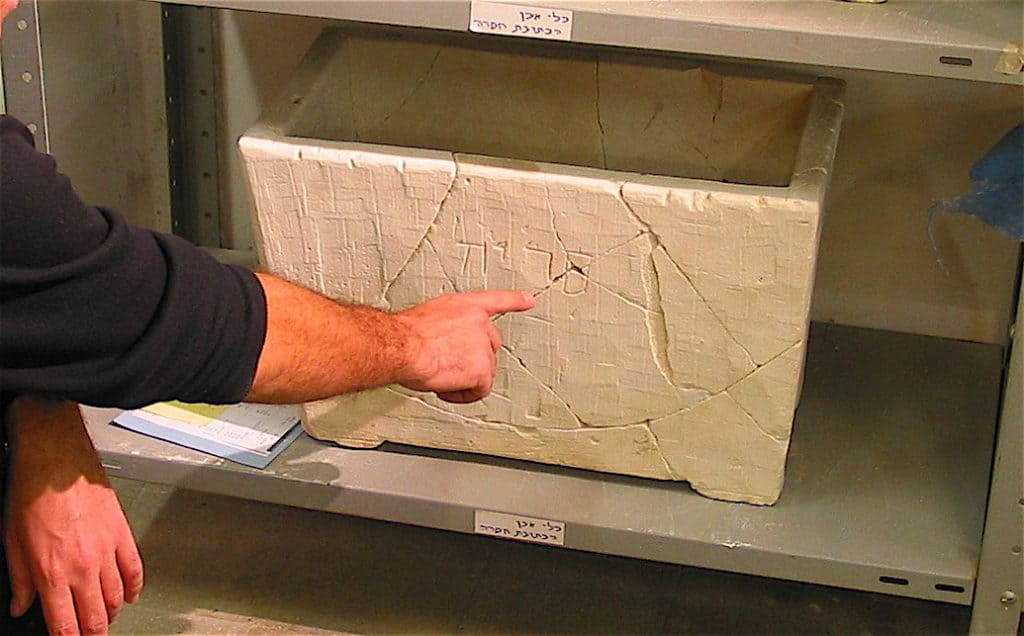
But what about Mariam, the mother? Our sources tell us precious little beyond Jesus’ birth, however, she is mentioned, along with the brothers, a few times in the gospels, but mostly in the gospel of John, which curiously, omits any birth story for Jesus. There is the wedding of an unnamed couple at Cana, a little town near Nazareth, and Mariam seems to be involved in its planning (John 2:1-10). This is the famous scene where Jesus turns water to wine for the wedding party. Jesus moves his mother and brothers to Capernaum, where he sets up his base of operations and they apparently live there, perhaps in Peter’s house (John 3:11-12; Mark 3:31-35). She is present at his crucifixion and involved in the rites of his burial, along with Mary Magdalene and perhaps his sisters (Mark 15:40-41, 47; 16:1). Jesus, in his dying moments, as oldest son, gives his mother into the care of “the disciple whom he loved,” whom I have argued is his brother James (John 19:25-27). According to Luke, Mary and the brothers are present–though unnamed–in Jerusalem with the remnant band of Jesus followers several weeks after his death at the festival of Shavuot/Pentecost (Acts 1:14). As to how Mariam spent the rest of her life we know virtually nothing. Some late sources put her in Ephesus with the apostle John, but these are likely influenced by the notion that John is the “beloved disciple.” There is a more dominant but also late tradition that she lived out her years in Jerusalem and died and was buried there. Indeed, her tomb near the Garden of Gethsemane is a popular sites for Christian pilgrims, as well as the Dormitian Abby on Mt Zion where she supposedly “fell asleep.” If the Talpiot tomb is that of Jesus of Nazareth and his family it is possible that the ossuary inscribed Mariah could be his mother’s since the other Mary in the tomb, Mariamene, is materially unrelated according to the two DNA tests done on the bones. Unfortunately, Mariah’s ossuary has been cleaned and was once on display at the Israel museum, so there were no skeletal remains that could be tested.
From a historical point of view Christian dogma and devotion, as sincere as it might be, rob both Jesus and his brothers and sisters, not to mention the mother that bore them, of their humanity. The very concept of an asexual “mother of God” is alien and foreign to Jewish culture and to the Hebrew Bible. Such ideas were brought into the Jesus movement decades after the death of Jesus and were unknown even to our earliest Christian witnesses–the apostle Paul and the gospel of Mark, who freely mention Jesus with brothers. They could only thrive in the centuries after the first generation had passed on, when James and the other brothers of Jesus were dead, the family dispersed, and the original Jewish followers of Jesus were scattered with little influence or effect on the increasingly Gentile movement that was growing up outside the land of Israel. In fact, both an asexual Jesus and an asexual Mary become necessary to the growing trend toward an ascetic, dualistic, quasi-gnostic, deprecation of the “flesh” and anything of this world, in contrast to the glorious heavenly world beyond.
Unfortunately, Mariam as the extraordinary Jewish mother of Jesus and his siblings was lost, forgotten, and finally outright denied. The image of Mary as “mother of God,” “queen of heaven,” and the “perpetual blessed virgin,”who intercedes for sinners was irresistibly attractive to countless millions–and remains so today.
I have no desire to be offensive here but when one backs off a bit from the theology and the mythology, the ideas associated with “Mariology,” as pious as they seem, are in fact a travesty on what she was in reality–that is the Jewish mother of Jesus and his family. It is indeed commendable that so many millions of people, whether Catholic or Protestant, want to remember Mary, mother of Jesus. One has to ask, though, whether removing her from her own children, and all we might imagine that she held dear, in terms of her life and Jewish faith, can be properly seen as “devotion” to her memory? Far from being sacrilegious or blasphemous giving Mary her human place as the devoted Jewish mother of Jesus and his siblings shows honor to Mary in a way that is long overdue.




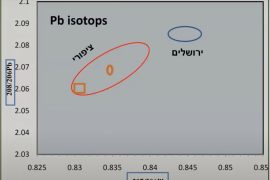
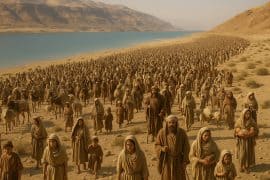

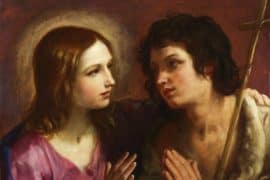

Comments are closed.